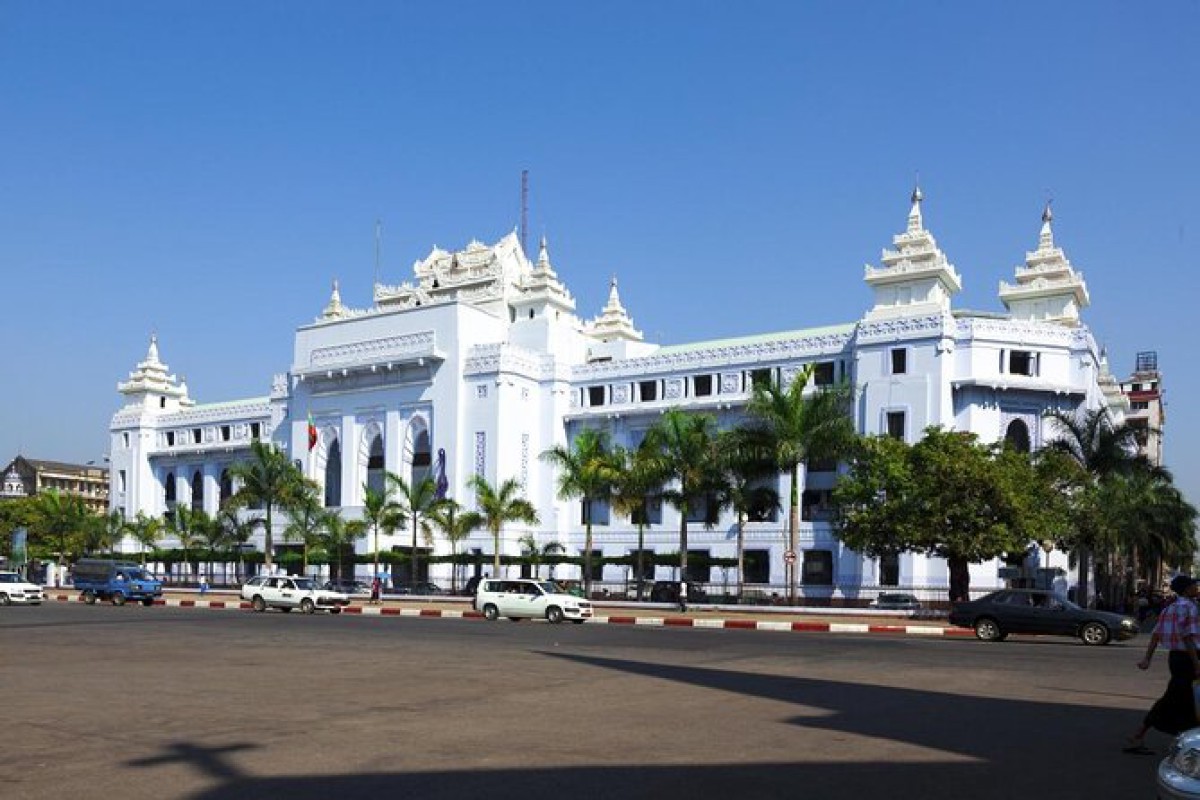Yangon's Iconic City Hall: A Colonial-Era Masterpiece in the Heart of Myanmar

615

By Hsu
Amidst the bustling streets and vibrant markets of Yangon, a magnificent structure stands as a proof to both Myanmar's colonial past and its enduring spirit of national identity: the Yangon City Hall. More than just an administrative building, this grand edifice, with its distinctive blend of East and West, tells a compelling story of cultural assertion during a pivotal era. For international visitors, it offers a fascinating window into the soul of a nation that meticulously wove its heritage into the very fabric of its colonial-era landscape.
Yangon City Hall: A Historical Crossroads
Yangon City Hall, an enduring symbol of national identity and resilience, was conceived during the British colonial era, when Rangoon (as Yangon was then called) was being transformed into the capital of British Burma. Initially, the tender for its construction was awarded in 1913 to British architect L.A. McClumpha, whose grand designs aligned with colonial ambitions for “the finest group of architectural buildings in Burma.”
The final design departed from colonial expectations and was instead entrusted to U Tin, a celebrated Burmese architect trained in British principles but deeply rooted in traditional Burmese aesthetics. His vision fused Western structural sensibility with Myanmar’s rich artistic heritage, creating a building that subtly asserted local pride amid colonial dominance.
Strategically positioned facing Maha Bandula Park and beside the revered Sule Pagoda, Yangon City Hall's placement was deliberate. While colonial planners often built near religious landmarks to assert control, U Tin’s inclusion of indigenous architectural elements turned the space into a cultural statement of defiance and dignity.
Completed in 1936, the building has since stood as a silent witness to Myanmar’s turbulent history—from the Japanese occupation during World War II and the birth of independence in 1948 to successive military coups and civil uprisings.
A Blend of Colonial and Burmese Architecture
What makes Yangon City Hall especially compelling is not only its historical prominence but its distinctive architectural character—a bold synthesis of Western form and Eastern spirit. The building exemplifies the genius of Sithu U Tin, a Burmese architect who reimagined colonial blueprints to reflect Myanmar's cultural identity. Trained in British architectural principles yet deeply rooted in native tradition, U Tin created a design that both met colonial standards and honored Burmese heritage.
The structure itself retains key hallmarks of British institutional architecture: grand arches, symmetrical proportions, and wide staircases. Yet these Western elements are overlaid with rich, traditional Burmese motifs that transform the building into a masterpiece of syncretic design. Most striking are the tiered roofs, known as pyatthat, traditionally reserved for royal palaces and sacred temples. Their upward-curving eaves and ornate ornamentation imbue the building with spiritual and cultural resonance.
This architectural fusion was no accident—it emerged at a pivotal moment in Myanmar’s nationalist movement, which sought to assert local pride within colonial confines. City Hall’s towering profile, crowned with the majestic pyatthat, sets it apart from other colonial edifices across Southeast Asia.
U Tin’s revisions extended beyond the roofline. The entrance façade showcases stucco carvings of mythical creatures and floral patterns inspired by ancient Buddhist temples. Fierce chinthe statues guard the gates, symbolizing protection and strength. Delicate lotus flower motifs line the fourth-floor loggia, a subtle nod to Buddhist heritage that harmonizes with the grand, three-story arcade reminiscent of Bombay’s colonial architecture.
Further embellishments—such as intricate peacock ornamentation above the doorway and the flanking naga (dragon) figures—reinforce the building’s Burmese soul. Its pale green roof tiles, white-washed walls, and tracery windows lend the structure a serene but commanding presence, allowing it to blend with the urban landscape while standing firm as a symbol of tradition and authority.
City Hall and the Spirit of Yangon
City Hall is not just a building; it is part of the soul of Yangon. Surrounded by other significant landmarks such as the High Court, the Sule Pagoda, the Independence Monument, and the Secretariat, it forms part of the city’s historic civic heart. Every day, locals and tourists alike pass by the building, often pausing to admire its stately presence or to take photos with the majestic backdrop.
Despite its age, the building remains functional and is actively used as the administrative headquarters of the Yangon City Development Committee (YCDC). Inside, city planners and public servants work amid colonial-era columns and original teak wood furnishings, ensuring that this historic space remains part of the living city.
Preserving Heritage Amid Progress
Amid rapid urbanization and rising skyscrapers, Yangon City Hall stands as a proud symbol of Myanmar’s cultural fusion. Like many colonial-era structures in the city, it faces mounting pressure from real estate development and environmental decline.
Heritage advocates—both local and international—have called for stronger measures to safeguard these architectural treasures. The Yangon Heritage Trust (YHT), a leading nonprofit, continues to champion the preservation of Yangon’s colonial legacy. Their vision is a city that embraces modernity while honoring its architectural past.
Yangon remains one of Southeast Asia’s few cities with a largely intact colonial core, drawing visitors to its timeless urban landscape. As one of its most distinguished landmarks, City Hall plays a vital role in keeping Myanmar’s layered history visible and alive.
Conclusion
Yangon City Hall is more than an administrative center; it is a national treasure. Its stately design, historical role, and cultural symbolism make it a building of deep significance not only to the people of Myanmar but to anyone interested in the architectural and historical crossroads of Southeast Asia. As Myanmar continues to face both political challenges and opportunities for renewal, City Hall stands as a reminder of what the country has endured—and what it still hopes to become.
For the international community, Yangon City Hall is an invitation. An invitation to explore Myanmar’s layered past, to appreciate its cultural complexity, and to engage with its people—not only through politics and policies, but through art, heritage, and the enduring beauty of a building that continues to inspire.